Come find our top-ticked canners for enjoying your delicious homemade foods year long.
By Editor Team | May 31, 2023
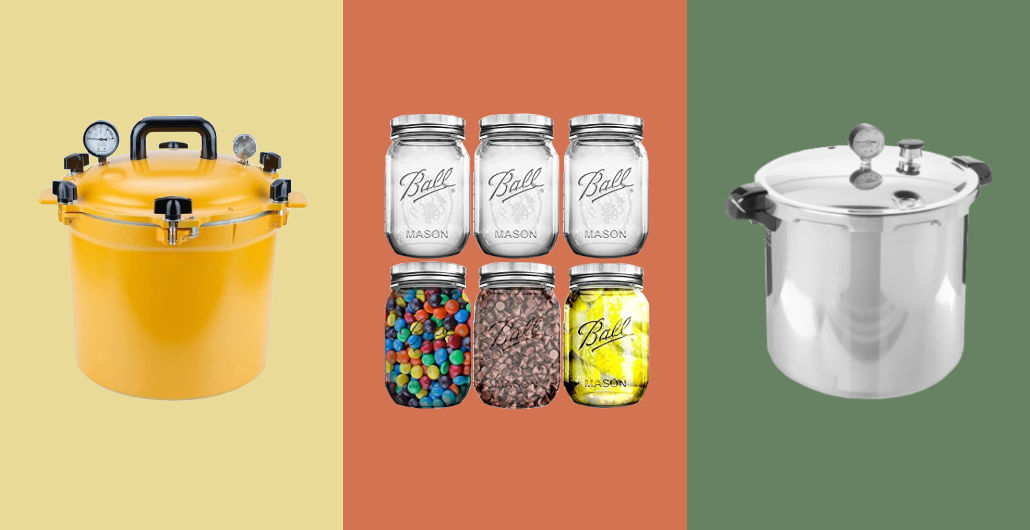
WHEN SUMMER COMES, there’re a plenty of fresh vegetables and fruits in your own garden and the market nearby. So, it would be great if we can preserve the harvests safely to enjoy delightful “off-seasoned” flavors all year round. You can also store a batch of stock, meats or even stew, which give you richer, fresher tastes without preservatives and other chemicals like products sold in supermarkets.
No to be confused with those pressure cookers, pressure canners can be used for preserving foods (and also pressure cooking)—which most pressure cookers can’t. Whether you’re canning experts who store your harvests every season or beginners who want to get a satisfied experience of homemade chemical-free preserved food, you’ll have to get the right products for the task.
Whichever you choose, the good model should be strong, reliable and safe to use. Here’re the best models on the market:
1
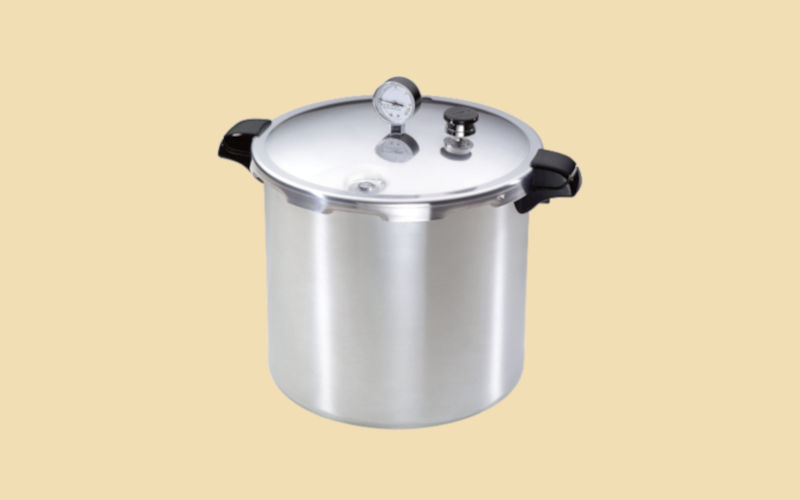
Image: Presto
Best All-Around
Whether a beginner or skilled cook, Presto 01781 is a simply good and reliable canner from a long-standing, reliable pressurizing company. The aluminum build is comfortably lightweight—far lighter than the All American—but not flimsy, which is welcomed for cooking on smooth-top ranges. We like that, despite being an inexpensive model, it can produce impressive outcomes like the pricier models. It’s straightforward to use and can double for a water-bath canner and a pressure cooker.
The size is a spacious for big batches. You’ll have an easy-to-monitor dial gauge with variable settings (5, 10 or 15 psi) for more flexible cooking—though you need to pay a little extra for low-pressured weights. A long 12-year warranty is an attractive bonus.
If you cook on induction or flat hobs, go for the 01784 model—an equivalent model with induction-compatibility.
Size: 23-quart
Material: Aluminum (∼12 lbs.)
Holding Capacity: 20-pint jars, 24-half-pint jars or 7-quart jars
Induction Compatibility: No (Yes, for 01784 model)
2
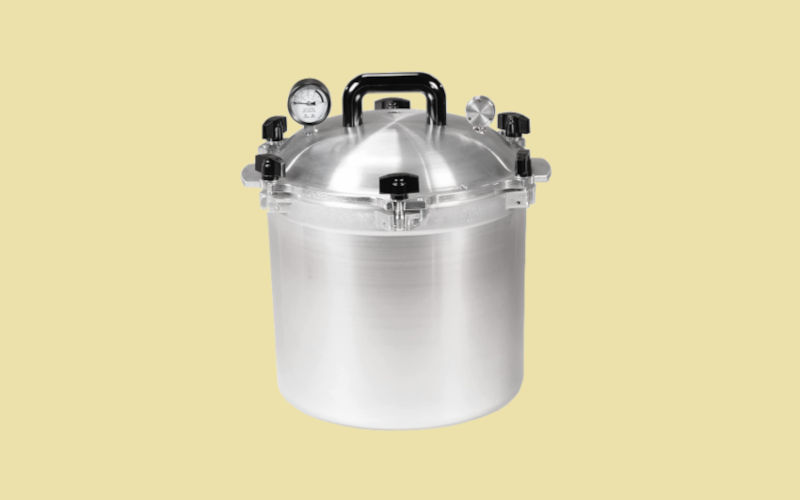
Image: All American
Best Upgraded Performer
All American has been strongest occupied the most reliable pressure canner place in the market. This “real tank” is crafted quality, stands for heavy duties and requires low maintenance. The substantial all-aluminum build gives exceptional heat performance—it runs effectively and securely. There’re a clear-cut monitor gauge and 3 weighted settings (5, 10 and 15 psi) for handling various types of foods.
We appreciate its smooth, built-to-last construction and all metal-to-metal sealing system—no long-term upkeep and replacement costs. Any drawbacks? Above from a short warranty, all quality perks come at both massive price and weight, but you won’t regret for this investment after years long, definitely.
A nifty choice, it offers some vibrant-colored options to spice up your kitchen, only available in 21.5-quart size.
Size: 21.5-quart
Material: Aluminum (∼17.8 lbs.)
Holding Capacity: 19-pint jars, 7-quart jars
Induction Compatibility: No
3
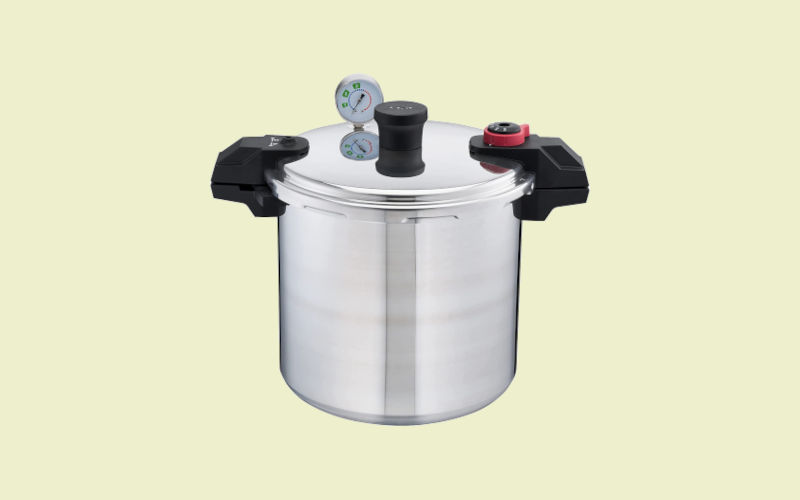
Image: T-fal
Best For Beginners
If you’re new for pressure canning world and want a “friendly” device to start, consider this T-fal. Made of polished, rust-proof aluminum build, it feels sturdy but not too hefty to lift and maintains pressure steadily with adjustable pressures (5, 10, 15 psi). On the top of that, there’re some good safety features for unskilled folks: a secure locking lid to ensure secure opening and closing, a pressure monitor and an emergency release valve for backup safety. More conveniently, it can work with various stovetops.
The use is pretty simple. The spring safety mechanism gives a pleasingly quiet operation but may be taxing on future checkup. Besides an unflattering look and a slightly confusing pressure indicator, this is a reasonable entry-level choice with a 10-year warranty.
Size: 22-quart
Material: Aluminum (∼14.8 lbs.)
Holding Capacity: 16-pint jars, 26-half pint jars or 7-quart jars
Induction Compatibility: Yes
4
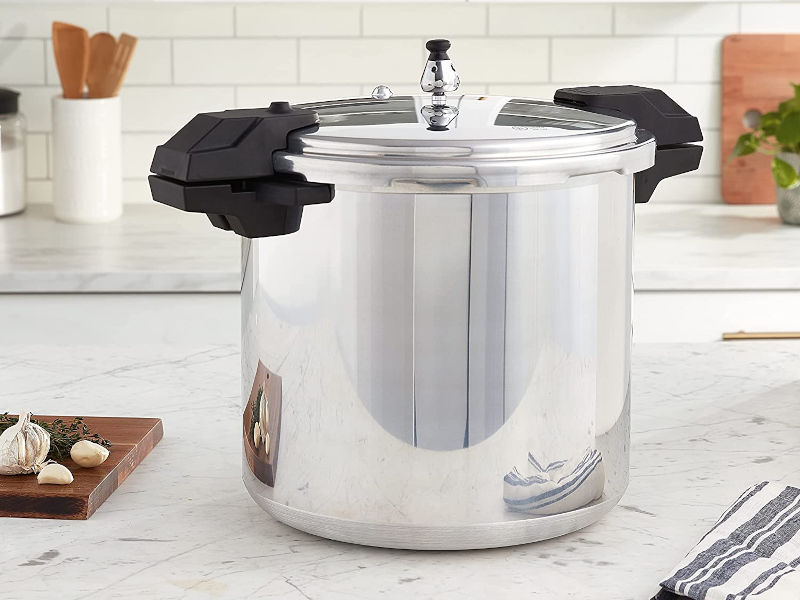
Image: Mirro
Best Value
At under $150*, Mirro provides you most of the features found in more expensive models. There's a lot to like: it’s made by a reliable brand, has a solid and hefty aluminum build and maintains steady pressure well—producing effective results with flexible pressure levels: 5, 10, 15 psi. The secure features are decent. It offers the locking-lid mechanism for preventing unintended opening and spilling, a gasket for safe steam release and a reusable plug for avoiding excess pressure though a bit tricky to twist the lid.
As being a weighted gauge, it needs minimal maintenance and won’t beg yearly gauge validation, but some users found a displeasing experience with after-sale service. Given this cost, it’s an unbeatable value buying that stands out in its minimalist aesthetic.
Size: 22-quart
Material: Aluminum (∼15 lbs.)
Holding Capacity: 16 pints, 26 half pints, or 7-quart jarss
Induction Compatibility: No
5
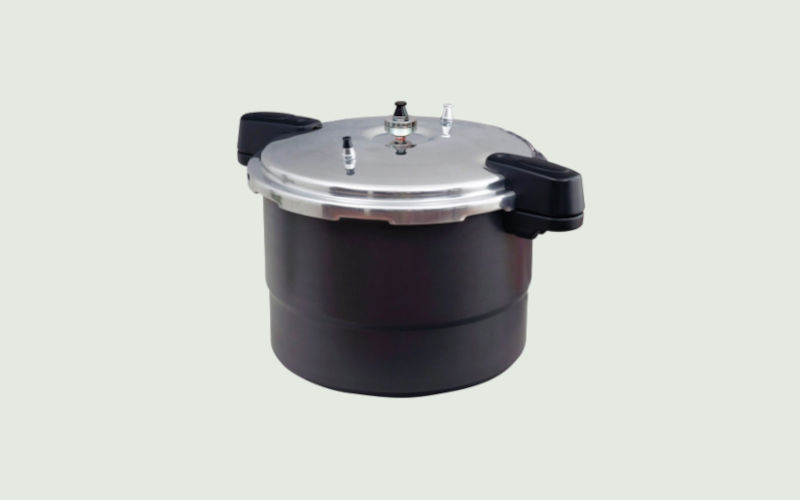
Image: Granite Ware
Best Compact & Lightweight
Granite Ware is a uncomplicated, smaller canner that occupies less space in your storage. The hard-anodized aluminum body with a stainless-steel lid is rust-resistant, durable and lightweight. It’s designed to be a multi-tasking cooker: not only regular canning with adjustable weighted at 5, 10 and 15 psi, but it can do water-bath canning for homemade jams, pressure cooking and steaming a large batch of veggies—handy for various cooking methods. We also like that it’s easy to use and requires low upkeep.
With a lower profile and lightweight, though holding a fewer volume than a taller counterpart, it’s a great space-saver and isn’t too heavy to break your modern hobs. Excluding a slightly pricier side and a cheapy-feel, unwieldly rack, this versatile cooker is a nice lighter, user-friendly option.
Size: 20-quart
Material: Hard-anodized aluminum (∼10.5 lbs. weight)
Holding Capacity: 8 pints, 24 half pints or 7-quart jars
Induction Compatibility: No
6
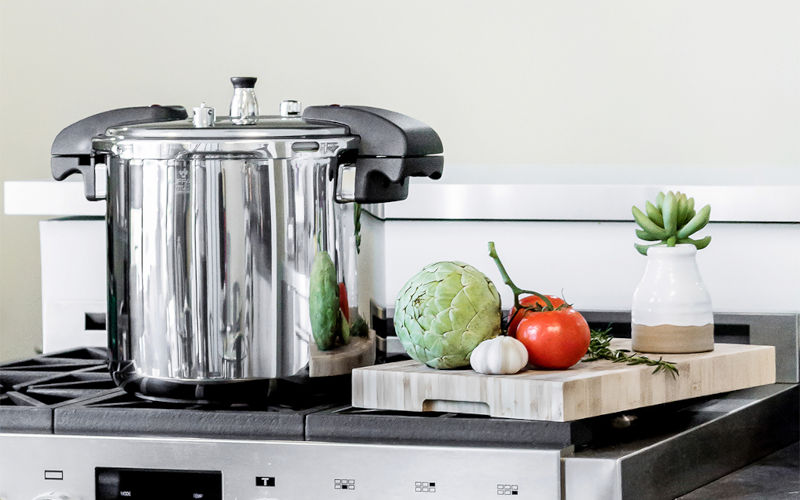
Image: Buffalo
Best for Small & Double Duties
If you want a versatile cooker to feed a large crew, make stocks from large bone cuts or can small amounts of fresh produce from your backyard, this Buffalo is a solid choice. Made of a polished, high-grade surgical stainless-steel, it’s solid but not painfully heavy and safe for cooking any types of foods, including high-acidic tomatoes and berries—rare to find in canners. The 3-ply aluminum base with a large 11” cooking surface lets you searing and sauteing much easier than most canners, though getting scorches a bit too quick. More versatilely, it’s well compatible with most cooktops, even induction and ceramic hobs, with a 10-year warranty.
It’s simple use and offers some decent safety features. A natural downside, the stainless-steel construction comes at a sharper price—and this doesn’t include the canning equipment.
Size: 15-quart
Material: Stainless-steel (∼11.7 lbs.)
Holding Capacity: 5 pints or 8 half pints
Induction Compatibility: Yes
7
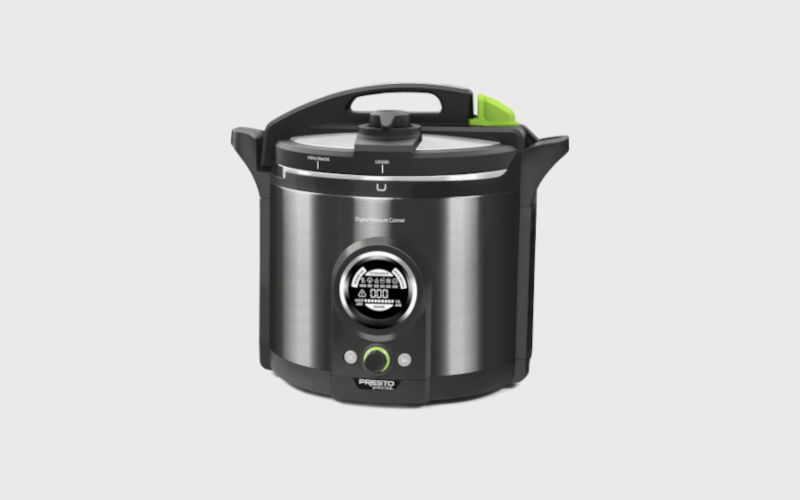
Image: Presto
Best Automatic Operation
Presto Precise Digital Pressure Canner
Even for a simplest model, canning can be a struggle for some people, so this electric version arises. Hailed as the first digital canner that meets USDA guidelines, it works the easiest like an electric pressure machine. With built-in sensors, it regulates pressure and temperature automatically and offers some satisfying safety features. Just follow the icons on the LED screen step-by-step to get all process done—no advanced skill needed. Another plus, it can do boiling-water canning for storing your favorite fruits.
A precaution, though it claims to work at all elevations without adjustments, to be safe from botulism we don’t recommend people (particularly in high altitudes) to can something too dense, like thick sauces or pumpkin purees—these aren’t good to can anyway. All-around, it’s a workable, no-brainer type of canner.
Size: 12-quart
Material: Electric machine (∼23 lbs.)
Holding Capacity: 5 pints, 10 half pints, or 5 quarts
Induction Compatibility: -
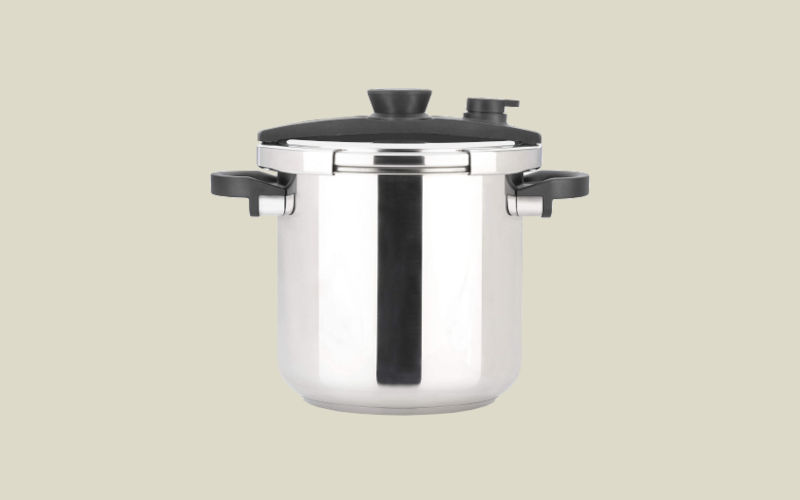
After wandering around in the market, we’ve found some interesting products that miss something to take a position in our favorable choices. Still, they’re inspiring to mention.
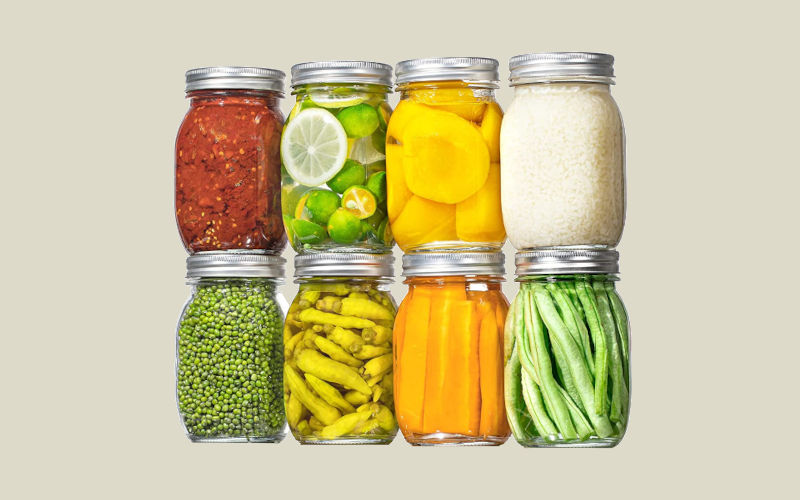
Are they the same? —Not Really. While these two things look similar, they’re not the same and do different duties. Both work on the same basis: trapping steam inside an airtight container to build up pressure. At 15 psi, water boils at 250°F—higher than non-pressurizing way at 212°F—that means to cook foods more rapidly (pressure cooking) and destroy microorganism more thoroughly (pressure canning).
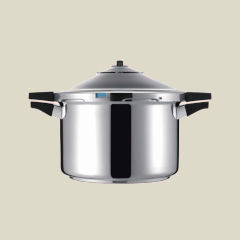
Pressure cookers are designed to reach to the temperature point radically and rapidly to speed up cooking time. Most of them can’t maintain adequate pressure and have too small capacity to can foods safely. Most models are stainless-steel for food safety reasons.
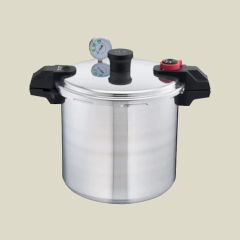
Pressure Canners are done by sterilizing low-acid foods at minimum of 240°, so they need to maintain continuous pressure at the proper temperature to kill the whole harmful microbes. That’s why many canners come with gauges—either dial or weighted gauges—to monitor pressure correctly for food safety. Typically, they’re made of solid aluminum to make lighter, better heat dispersion and cheaper.
You may have heard that “a canner can cook, but a cooker can’t can.” This means: though pressure canners can be used for both cooking and canning, most pressure cookers can’t achieve safe canning. Why?
As being designed for cooking, most pressure cookers in the market lack the ability to regulate and maintain the right amount of pressure in the pot. Moreover, most are too small to can safely. This causes heat-up and cool-down time too short to entirely kill all microbes and botulism spores—the same reason why you can’t force cool the canner.
More importantly, canning requires an accurate monitor gauge to know exactly what pressure inside, which most pressure cookers don’t have. This why we recommend you check the company’s instructions carefully to ensure if they meet safety requirements before canning, even if you have a “double-duty” pressure cooker.
Before canning, read the product’s manual thoroughly and check the safety features if they work properly—rubber gasket, vent port, lid and dial gauge must be in good conditions. Also, look for a UL certification seal to ensure that the model has met inspection and operates safely, and it should have regulated by the National Center for Home Food Preservation (NCHFP).
Keep in mind that some foods aren’t recommended for home canning. This is because the product itself can interfere with heat transfer during can processing and allow harmful microorganisms (such as C. botulinum) to survive.
These foods include dairy products, eggs, pasta and rice, very thick puree (such as pumpkin or squash), thickened soups with starch, vegetable glazed with oil and bread. Also, don’t do dry canning raw vegetables and herbs.
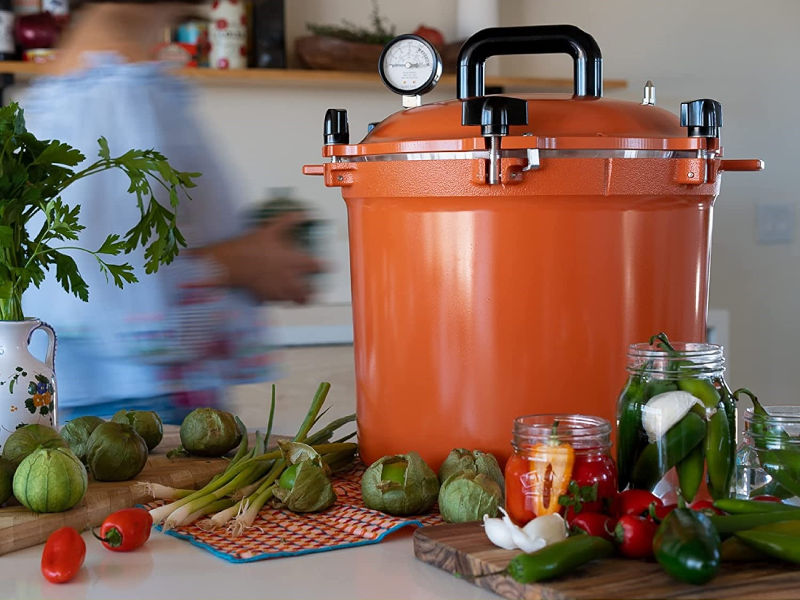
A good pressure canner should be accuracy and easy to use. It should reach the required pressure accurately, maintain the pressure smoothly and has sufficient safety features and isn’t complicated to use. To get the right (and safe) ones, consider these followings before buying:
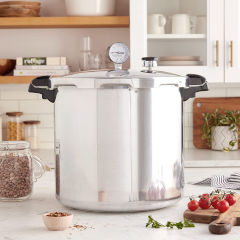
Dial Gauge lets to know and regulate the pressure more precisely during the canning process. So, you have to adjust heat source yourselves to maintain the desired pressure shown on dial gauge.
It operates very quietly and is good for those above 2,000 feet in altitude who need incremental pressure adjustments for safely canning. However, it requires accuracy testing yearly—extra cost and difficulty.
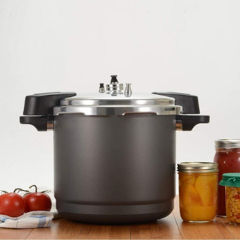
Weighted Gauge controls pressure in the canner itself by releasing excess steam to keep the pressure at the desired point. The sound of “jiggling” motion indicates that the canner is maintaining the desired temperature.
As having limited weight adjustments (only 5, 10 and 15 psi), it’s suggested not to use at high elevations (over 2,000 feet). Unlike dial gauge, it doesn’t need validation check and won’t need to be continuously monitored—easier to maintain chosen pressure.
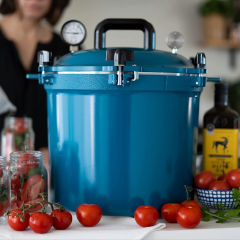
Dual Gauge is a hybrid configuration of both a dial and a weight gauge to provide a substitute adjustment if one should fail. It’s rarer to find and more expensive.
Though it looks like an improved regulation as taking benefits from both, when actually processing, weight gauge becomes the real controller while dial gauge will act more like a pressure validator.
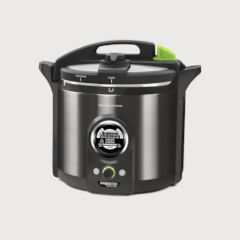
Digital or Electric regulates the pressure automatically by a built-in sensor to reach the desired temperature, no matter your altitude is—no need to watch or control the stove. It also works silently.
Yet, it hasn’t been officially endorsed by experts (though claiming to comply with USDA guidelines) and doesn’t have any pressure or temperature monitors to check. So, use it carefully and follow the manual strictly.